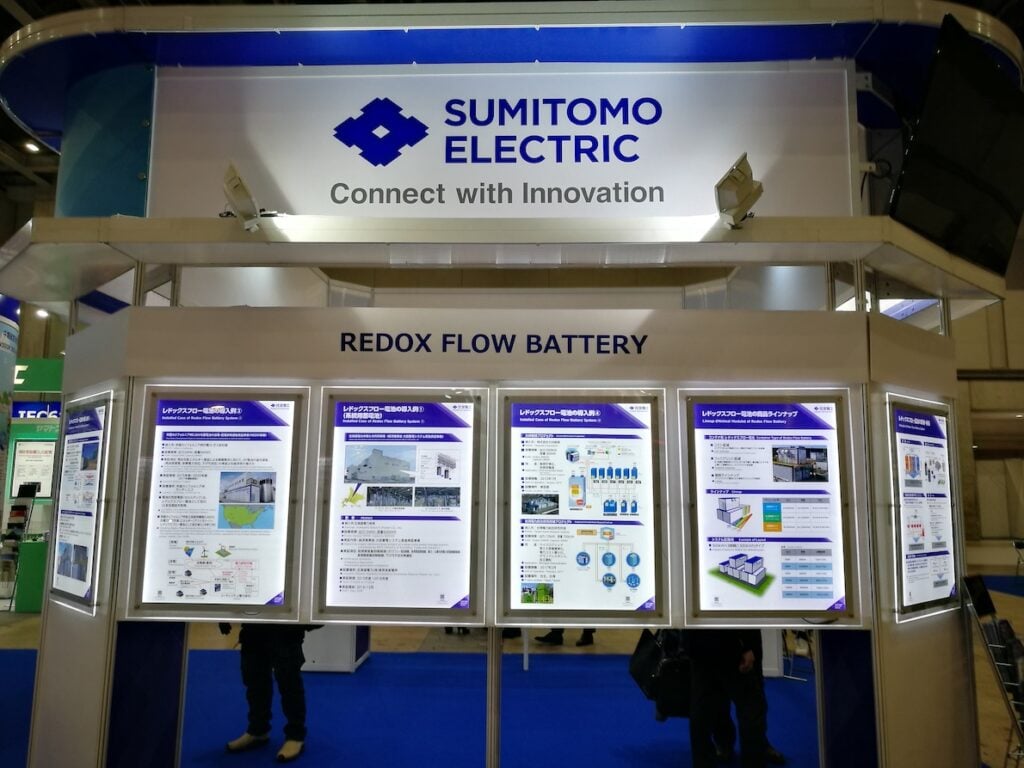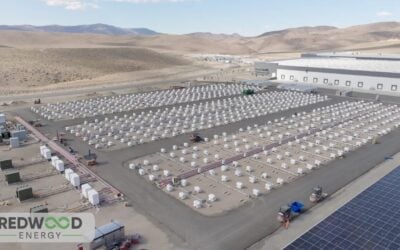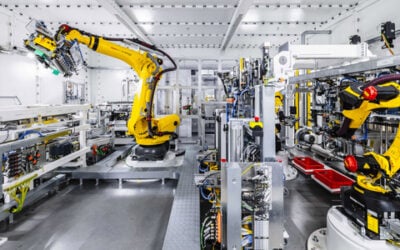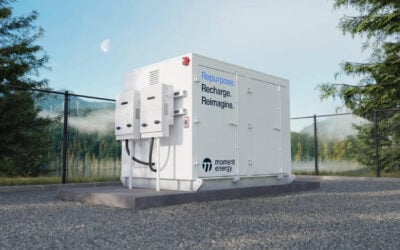
Sumitomo Electric will step up its vanadium redox flow battery (VRFB) business in the US, with plans to invest in local production and installation capabilities.
The Japanese company said last week that it will invest an initial US$7.6 million into US production and installation facilities, based on the expectation of rising demand for the energy storage technology.
Enjoy 12 months of exclusive analysis
- Regular insight and analysis of the industry’s biggest developments
- In-depth interviews with the industry’s leading figures
- Annual digital subscription to the PV Tech Power journal
- Discounts on Solar Media’s portfolio of events, in-person and virtual
Speaking at the DISTRIBUTECH International trade event for the electricity transmission and distribution (T&D) sectors, Sumitomo Electric president and chief operating officer Osamu Inoue noted that the company has been present in the US for the past 50 years of the company’s 120+ year history.
Inoue talked up the strengths of Sumitomo’s flow batteries, describing them as “very safe and environmentally friendly,” with an expected lifetime of 20 years, with reusable electrolyte.
“It is our strategy to promote green transformation and contribute to the realisation of a decarbonised society through the supply of our battery systems.”
Sumitomo Electric was the provider of the country’s biggest VRFB installation to date, a 2MW/8MWh pilot project in the service territory of investor-owned utility San Diego Gas & Electric (SDG&E).
As well as being the first flow battery to participate in California’s wholesale energy market, it was also used in a demonstration project last year as part of a microgrid which powered nearly 70 homes and businesses independently of the grid for close to five hours.
COO Inoue said the pilot project had been successfully completed, including six years of operation with “extremely low” capacity fade from degradation, daily participation in CAISO markets, as well as the microgrid trial.
The latter is particularly relevant in California, where many communities are experiencing public safety power shutoff (PSPS) events – utilities are de-energising distribution networks to prevent equipment failures that can cause deadly wildfires, such as power lines being hit by falling trees.
In other words, Sumitomo Electric sees the use cases for the flow battery including supply and demand adjustment of electricity on the grid, microgrid applications for emergencies as well as energy trading for ancillary services like frequency regulation of the grid.
The company was also behind what was until recently the world’s biggest VRFB system, a 60MWh project in Hokkaido, northern Japan, which was recently overtaken for the ‘title’ by the commissioning of a 100MW/400MWh system in Dalian, China. Sumitomo did also commission a second large-scale Hokkaido project, of 51MWh capacity, last Spring.
Rising tide of US clean energy investments could lift flow batteries
Sumitomo Electric’s announcement comes just a few days after another Asia-headquartered flow battery company said it would establish US manufacturing capacity. Singapore’s VFlowTech plans to use a US$10 million Series A funding round towards setting up a 200MWh factory in the US to scale up production of its 250kWh VRFB units.
In mid-January, South Korean VRFB company H2 Inc said it was also scaling up its US activities, raising US$18 million in a Series B that it said would help progress a planned 5MW/20MWh VRFB installation in California at the site of a decommissioned peaker plant. H2 Inc broke ground on a factory in South Korea last year with 300MWh annual production capacity, scheduled for opening this year.
One common denominator these companies share is the likely influence of the US’ Inflation Reduction Act (IRA). The US$369 billion federal legislation incentivises both manufacturing and deployment of clean energy technologies and in an interview last year, one lawyer specialising in the US energy sector told Energy-Storage.news it could have a transformative impact on the business case for flow batteries.
Flow batteries are in many ways technically superior to other options including lithium-ion, Morten Lund of law firm Stoel Rives said, but despite their lower cost of ownership over their lifetime, their upfront capital cost remains higher than lithium-ion battery energy storage systems (BESS), making the investment case tricky pre-IRA.
Last week, Senator Joe Manchin and a bi-partisan group of colleagues urged the US to prioritise investment in non-lithium technologies for energy storage, calling on the Biden-Harris Administration to “use future funding for both lithium and non-lithium battery chemistries to reduce America’s reliance on foreign supply chains and strengthen our energy security.”
Energy-Storage.news’ publisher Solar Media will host the 5th Energy Storage Summit USA, 28-29 March 2023 in Austin, Texas. Featuring a packed programme of panels, presentations and fireside chats from industry leaders focusing on accelerating the market for energy storage across the country. For more information, go to the website.






